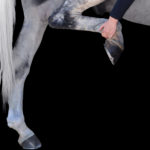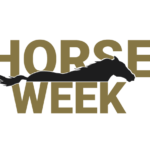Feb. 17, 2005 — Some of the world’s best riders and horses are placing their bets on Las Vegas this year, eager to see if their scores from earlier qualifying competitions will be enough to earn a ticket to the FEI World Cup Show Jumping and Dressage Finals, April 20-24.
To these athletes, competing in the 2005 FEI World Cup Finals not only means they’re at the top of their game–it also means they’ll be adding their names to a historical register of sorts. For the first time in history, two World Cup Finals will unfold at the same venue.
“The World Cup Final is my favorite competition,” says Sally Ike, Director of High Performance Show Jumping at the United States Equestrian Federation (USEF). “It’s equestrian’s version of the All-Star Game, with the best athletes from all over the world competing for the honor of being World Cup Champion.”
Aside from those who are deeply versed in equestrian sport, many Americans and horse-lovers alike are wondering what the World Cup Finals are, what they mean and how they will affect our country. That said, take a step back with us as we go through the basics–World Cup Finals 101.
For starters, the Finals, like most any world title, promise to be a who’s who of equestrian sport. Olympic medalists, and world and national champions will vie for new titles. The horses and riders who compete in Las Vegas will have qualified in one of 13 leagues across the globe for jumping: U.S. East Coast, U.S. West Coast, Canada, Central Europe, West Europe, Australia, Arab, South America, South Africa, Central Asia, South East Asia, Japan and New Zealand; or in one of five leagues for dressage: U.S., Canada, Central Europe, Western Europe and Pacific.
The USEF will send as many as 16 riders to represent our nation at the World Cup, and possibly double the number of horses.
As many as 12 of those riders will compete in the Jumping Final; seven from the East Coast League, three from the West Coast League. The U.S. will also submit two wild card riders, an additional benefit traditionally given to the host country.
More than 80 riders have been working to qualify for the Jumping Final since August of 2004. Because the spread of the United States is so vast, the riders compete in one of two U.S. leagues, based on where they live. With a total of 12 qualifying competitions in the East Coast League and nine in the West Coast League, these show jumpers have ample opportunities to accumulate “World Cup Points.” The seven East Coast riders and three West Coast riders with the most points then move on to the World Cup Final.
As many as four riders will represent the country in the Dressage Final. To get this number, the top 12 riders as determined through a series of 17 qualifying competitions go on to compete for two slots, awarded through the U.S. League Final. The host country also will submit applications for two wild card riders.
While the World Cup Jumping Final took place in the U.S. just two years ago, this is the first time in 10 years that the World Cup Dressage Final has been awarded to America. An annual event, the Finals in both disciplines traditionally take place separately, in a variety of countries around the world.





